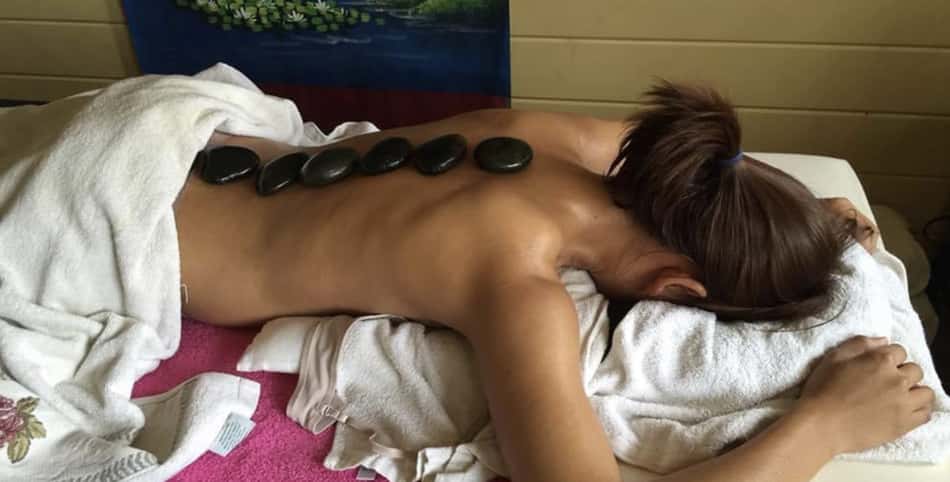
Yoga practice has a holistic impact on the body and mind. However, it is tough, especially if you’re getting started. In this article, I will be answering the question does yoga make you sore, and what you can do to get rid of DOMS?
Yoga can make you sore because excessive stretching or unaccustomed exercise often leads to muscle exhaustion and soreness. People who are untrained or who just getting started with yoga can experience discomfort and pain for 3 to 5 days after the session.
But there is a lot to understand about this topic. In addition to seeing the list below, please read about each section on how you can reduce muscle soreness.
Why Does Yoga Make Me Sore?
Yoga can make you sore because of DOMS (delayed onset muscle soreness). It’s a response of the muscle after excessive or unfamiliar exercise where the eccentric muscle contraction induces micro-injury. Muscle damage leads to pro-inflammatory responses and soreness.
The first mention about the DOMS comes from Theodore Hough who wrote an article in American Physical Education Review “Ergographic Studies In Muscular Soreness” in 1902 and associated the soreness with ruptures in the muscles.
Is being sore after yoga normal? It is normal to feel sore after yoga, especially if you haven’t done it before, or if the session was exhausting. Yoga asanas contain several eccentric movements. Eccentric muscle contraction produces inflammatory byproducts that manifest in the system and cause pain.
This is a natural part of the muscle remodeling or turnover process.
When does yoga stop hurting? In general, yoga stops hurting after the first 3 to 5 days after the first session. However, if you’re just getting started and you’re planning to do it more frequently, it can take 2 to 4 weeks before the body gets fully accustomed to the new routine.
What muscles get sore from yoga? The most common muscles that get sore after yoga are the lower back, hamstrings, shoulders, and abdominals. Depending on the muscle tension and fitness levels, some people also experience soreness in the calves, upper back, and neck.
Sore Immediately After Yoga
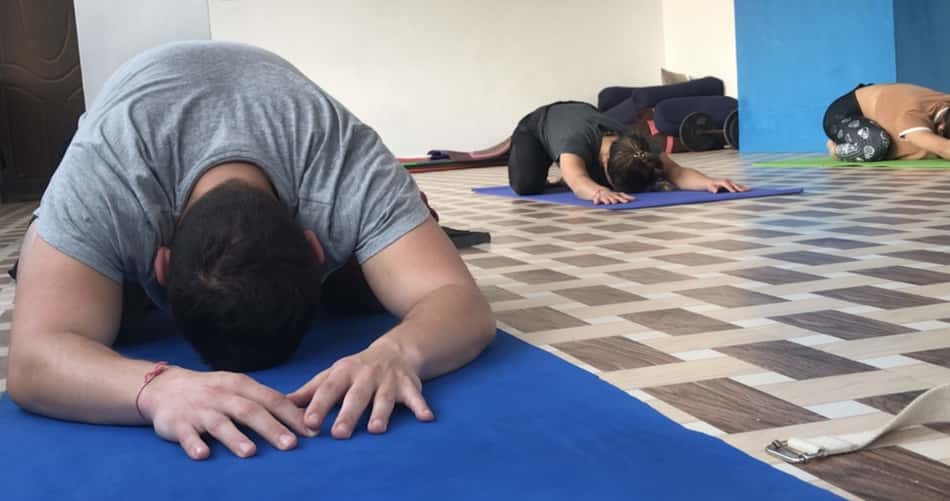
People who are introduced to a new and unfamiliar routine of exercise will experiance muscle soreness at some point. The intensity of your muscle pain after yoga will be depending on how hard was the class, how long it took and how flexible you were.
Is yoga tough? Doing yoga is tough because it engages several muscles and joints in your body that haven’t been used before. People who are not flexible may find it hard to continue because of muscles are stiff. Even people who are physically active, but haven’t done yoga before say it’s challenging.
I still remember my first week of Ashtanga yoga in Rishikesh where we were doing two sessions per day. I felt sore in every muscle so I know this is normal. The same effect happens after extensive weight training, running, or HIIT workout.
10 Strategies To Get Rid Of Soreness After Yoga
The most effective way that helps with muscle soreness after yoga is to pace yourself, start slowly, and not get to the point of soreness in the first place. People get sore because they participate in a general class that can be beyond their fitness level.
However, in the real world, if you’ve already done the work, now is the time to find some practical solution to reduce pain.
There are several strategies to help you get rid of soreness after yoga. Here the 10 most common and scientifically proven ways that I can recommend.
Strategy #1: Exercise
I think this one doesn’t needs the introduction.
Does exercise help with muscle soreness after yoga? Exercise does help with muscle soreness after intense yoga sessions. Low-intensity and short-duration exercise improves blood flow, reduces inflammation, reduces muscle fatigue, and leads to faster recovery.
According to Dr. Karoline Cheung from Auckland University of Technology in New Zealand, exercise is the most effective way of alleviating pain during DOMS. However, people should be mindful to reduce the intensity and duration of exercise for 1-2 days following intense DOMS-inducing exercise (source).
But what happens when you’re sore already?
Is it bad to work out if your muscles are still sore? It is not bad to work out when your muscles are sore because the gentle, steady-state exercise can help to reduce the DOMS effect. Alternatively, doing body parts that feel less sore can be also beneficial to enhance muscle perfusion and recovery process.
This means if you’re legs are sore, you can try upper body movement.
And vice versa.
Strategy #2: Massage
According to scholars, massage therapy was the primary form of medicine until the pharmaceutical revolution of the 40s. It has been widely used as an alternative form of medicine to reduce pain, increase alertness, combat depression, and enhance well-being.
Does massage help with sore muscles? Massage treatment can help with muscle soreness after a workout, or intense yoga session because it increases muscle temperature, blood perfusion, lymphatic activity, and parasympathetic response. It is a widely used treatment to alleviate symptoms of DOMS.
According to Dr. Pornratshanee Weerapong from Auckland University of Technology in New Zealand, a 20–30 min massage performed within 1-2 h after exercise has been shown to effectively reduce DOMS for 24 h after a workout (source).
But that’s not all.
What was cool about this study is that they measured levels of pro-inflammatory creatine kinase and c-reactive proteins (compounds that creates the soreness).
Massage showed the best improvements in the actual blood work, comparing to other recommended methods.
Which massage is best for muscle soreness? The best massage for muscle soreness is a hot stone massage or hot bamboo massage. These treatments combine the application of mechanical pressure with heated lava stones or bamboo sticks, which enhances circulation and clearance of inflammatory compounds.
My personal best choice for DOMS is hot stone because not only helps to release muscle soreness but also is extremely relaxing. My second best option would be Thai massage because it combines the massage with acupressure and stretching.
Strategy #3: Compression garments
A study done by Dr. Braid A. MacRae from the University of Otago in New Zealand showed that wearing compression garments had a significant and positive impact on DOMS and perceived fatigue (source).
I use compression socks myself and I’ve noticed a huge difference in how do my legs feel. Compression socks are designed to create pressure around your ankle and calf area.
Gradual compression, which is usually higher around the ankle (30–40 mmHg) and lowers around the calf (21–28 mmHg), boosts your blood flow and circulation. With more blood flow you got more oxygen coming to the muscles, removing the waste products and flush the lactic acid build-up.
It’s kind of like a water hose in the garden. When you turn on the pressure, water goes through the hose steadily. But the moment you step on the hose, pressure will dramatically increase. That’s how compression socks work for your blood flow in the legs.
Strategy #4: Cold water immersion
Cold water immersion, also known as ice baths, involves submerging immediately after exercise in cold water (15˚C). This is a well-known and established recovery method that works by vasoconstriction of the blood vessels which decreases inflammation.
During my attendance in Barca Innovation Hub Sports Week in 2018, Dr. Ricardo Pruna, the first team doctor for FC Barcelona, and Dr. Alan McCall, head of Research and Development for Arsenal Football Club, revealed that cold water immersion is one of the most common recovery strategies used for elite football players.
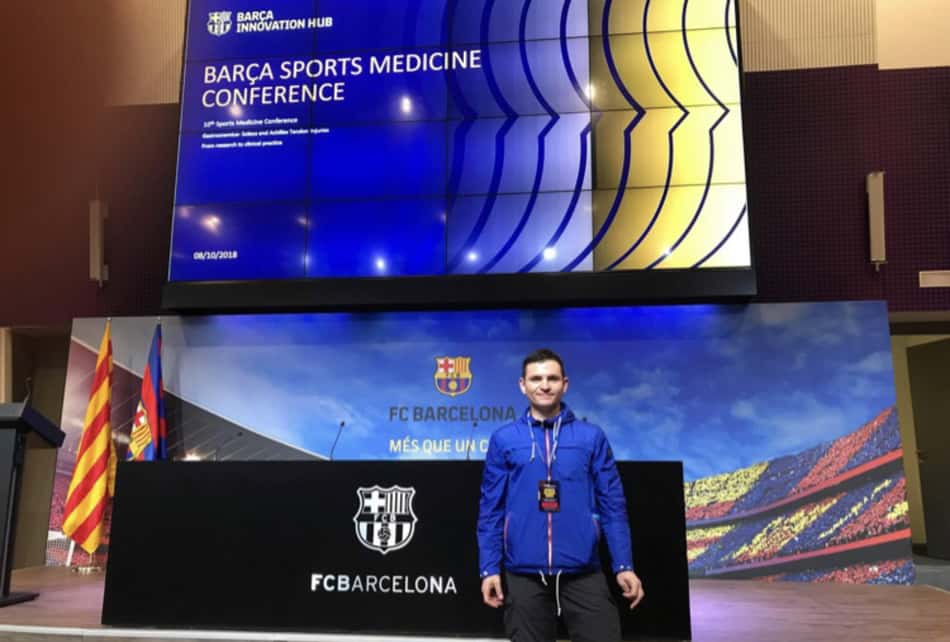
I’ve figured out that if cold water immersion is good for an elite athlete then it must be good for me after my yoga session.
Does cold water help with muscle soreness? In general, cold water does help with muscle soreness because of the constriction of blood vessels. Cold water limits the blood supply to the tissue and reduces the concentration of pro-inflammatory creatine kinase and C-reactive protein.
A study done by Dr. Chris Bleakley from The University of Ulster in the UK documented that there is evidence that cold‐water immersion reduces muscle soreness after exercise, compared with passive interventions like regular rest (source).
But cold water immersion doesn’t mean you need to pop into the ice bath. You can use something more available to everyone like a cold shower, ice packs, or cooling gel application available in the pharmacy.
Do cold showers reduce DOMS? Cold showers do reduce DOMS because is speed up recovery from stressful bouts of exercise by flushing waste products, such as lactic acid. Taking a cold shower after a workout facilitates faster heart rate recovery and decreases inflammation.
Are cold showers good for yoga? Taking a cold shower is good for yoga because it can be used either before as a stimulant or after the session as a recovery method. Taking a cold shower after yoga class can facilitate better recovery by increased parasympathetic activity during cold acclimation.
It feels uncomfortable at first. But you get used to it quickly.
Learn more: Click here to learn tips and hacks for “showering at the gym“
Strategy #5: Active recovery
Active recovery is a type of low-intensity workouts like walking, swimming, or light stretching. It is usually done after a strenuous bout of exercise to facilitate muscle circulation. Doing light forms of exercise enhances lymphatic system activity and helps to flush out the waste products.
A study done by Dr. Zainal Zainuddin from the Universiti Teknologi in Malaysia documented that active recovery, as a light concentric exercise, has a temporarily analgesic effect on delayed-onset muscle soreness (source).
This means it works.
But it can only do so much. One of the most established and well-studied (over 40 years) forms of active recovery is walking.
Walking, as a part of active recovery, is good for yoga because it enhances the clearance of pro-inflammatory compounds like creatine kinase or myoglobin. It is the most convenient and available for everyone way because it doesn’t require any specific equipment or location.
You can also try some light yoga.
Should you do yoga sore? You can do yoga while your muscles are sore. Stretching is an effective way of alleviating muscle soreness during DOMS because it triggers the parasympathetic response to release endorphins. However, this analgesic effect is only temporary.
Your intensity matters, too.
Instead of going for an advanced class like Power yoga or Ashtanga, it’s better to try something more relaxing or reduce the session time. Reducing the intensity or duration of an exercise is a proven strategy to combat muscle soreness (source).
Strategy #6: Cryotherapy
Cryotherapy is a physical treatment that exposes the body to a very cold air temperature (-110 to -190°C) in special, controlled chambers. It is widely used in sports medicine for recovery purposes and for treating symptoms of various diseases.
The cold air comes from the liquid nitrogen and is circulating in the tube, so it evenly contacts each part of your body. Each session lasts around 3 minutes.
Before you take the treatment, you need to measure your blood pressure and fill out a consultation form where they will ask you to list all the medical treatments and medications that you’re currently taking.
A study done by Dr. Giovanni Lombardi from I.R.C.C.S. Istituto Ortopedico Galeazzi in Milan, Italy, shown that cryotherapy had a positive effect on DOMS after an exposure of 3 min exposure at −140 and −195°C (source).
Can you do cryotherapy after yoga? You can do cryotherapy after yoga because it’s been shown to reduce DOMS, inflammation, pain, muscle fatigue, and swelling that occur after a strenuous exercise session. Apart from its anti-inflammatory, anti-analgesic, and anti-oxidant effects, cryotherapy can also relieve stress and improve mood.
On average, 3 minute cryotherapy treatment caost between $20 – $30, depending on the package.
Strategy #7: EMS
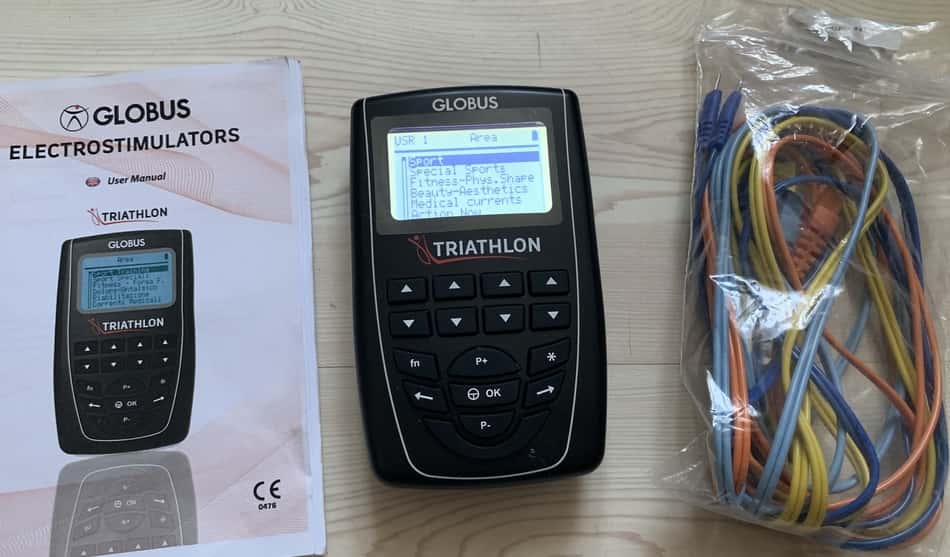
EMS (electrical muscle stimulation) is used to facilitate active recovery through low stimulation frequencies that induce muscle contraction. Short-lived low-intensity electric signals enhance muscle blood flow and therefore accelerate metabolites washout for better recovery.
A study done by Craig R. Denegar, Ph.D from the University of Connecticut showed that the use of TENS resulted in significant decreases in perceived pain and muscle spasm associated with DOMS (source).
The device you see in the picture above I use on the regular basis on myself and my clients. It’s called Globus Triathlon.
It has TENS current (transcutaneous electrical nerve stimulation) programs that are usually used to treat pain by stimulating large fibers and enhance the release of endorphinic substances.
It has also a microcurrent stimulation program that is less intense and can be used on small muscles and joints. The difference between TENS and microcurrent is within the electrical current. TENS works at the milliampere (mA) level where microcurrent works at the microampere (microampere μA).
I like to use that because I don’t have to do anything while it works on my muscle contraction. I can sit, watch Youtube, or read on my laptop, and this device is doing all the work for me.
Can I use EMS after yoga? You can use EMS after yoga because it helps to reduce DOMS, muscle fatigue and enhance lymphatic drainage. The lymphatic system is stimulated by the rhythmic muscle contractions induced by the electro stimulator and it can be used daily.
Should I use EMS before or after yoga? EMS devices can be used before yoga as part of active warm-up because it increases muscle blood flow and ramps up sympathetic response. It can also be used after a yoga session to help with recovery and prevent muscle soreness.
Strategy #8: Caffeine
This is a great news if you like to have a coffee before your yoga session.
Does caffeine help with muscle soreness? Caffeine does help with muscle soreness by blocking adenosine receptors. Caffeine is an adenosine antagonist, which means it temporarily deactivates the central nervous system and can help to reduce the effect of DOMS and muscle fatigue.
A study done by Dr. Caitlin F Hurley from the University of Rhode Island in South Kingston, Rhode Island, documented caffeine’s role in reducing the perception of pain and muscle soreness (source). It is a very interesting study and I recommend you check it out.
Another study done by Dr. Victor Maridakis from the University of Georgia showed similar results that caffeine attenuates delayed onset muscle soreness and pain by up to 48 percent in a small sample of volunteers (source).
How much coffee I can drink to reduce soreness after yoga? To reduce muscle soreness from yoga you can take 5 mg per kilogram of body weight of caffeine (with 500 ml of water) twice. The first time should be 1 hour before the session, and the second time 24 hours after the session.
That’s about 6-9 cups of coffee.
Strategy #9: Omega-3 fatty acid
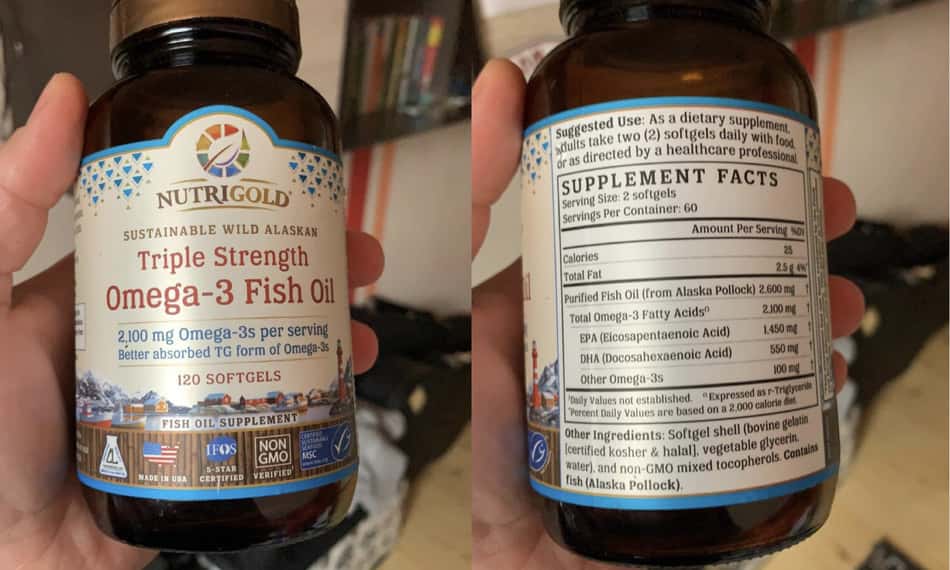
Omega‐3 are essential polyunsaturated fatty acids that cannot be manufactured in the body. They play a role in several body processes like keeping the cell membrane more fluid, enhance blood perfusion, and enhance neurochemical transition.
When you’re taking Omega-3 you need to pay attention to the actual EPA and DHA levels. Supplement industry law is quite liberal and doesn’t have any regulations on what is in the bottle. This means the label of supplement can say “fish oil” but in reality the levels of EPA and DHA and almost nonexistent.
In the picture above you can see the label from the company called NutriGold which offers 2,100 mg of combined EPA and DHA per serving.
Does Omega-3 reduce soreness? Omega-3 fatty acids do reduce muscle soreness because they contain eicosapentaenoic acid (EPA) and docosahexaenoic acid (DHA) that regulate the inflammatory response. Increased levels of EPA and DHA decrease the activity of pro-inflammatory leukotriene and prostaglandin.
A study done by Dr. Tracey Phillips from the University of Florida in the US documented a significant reduction in inflammatory mediators C-reactive protein and interleukin-6 (source).
This means the results weren’t measured by perception of soreness. The omega-3 fatty acids actually reduced concentration of the pro-inflammatory compounds that are responsible for cell damage during DOMS.
How much omega-3 per day to reduce muscle soreness? You should take approximately 1.8 g to 3 g of omega-3 fatty acid per day to reduce DOMS after exercise. Some studies have shown that 3 g of omega-3 fatty acid per day was enough to significantly reduce DOMS in the first for 7 days.
Should I take omega 3 before or after yoga? The best time to take omega-3 fatty acids is after a yoga session after you have a meal. Food intake influences the bioavailability of fatty acids. The presence of food stimulates digestive enzyme lipase to fully facilitate, emulsify and absorb EPA and DHA.
Strategy #10: Taurine
Taurine is an organic amino acid that occurs naturally within the body, mainly found in skeletal muscles. Some of the functions of taurine are membrane stability, osmoregulation, calcium homeostasis regulation and antioxidant.
Does taurine help with DOMS? Taurine does help with muscle soreness because it reduces oxidative stress and inflammation response after eccentric exercise. It works by decreasing lactate dehydrogenase level, creatine kinase activity, and oxidative damage that causes DOMS.
A study done by Dr. Luciano A. da Silva from the Universidade do Extremo Sul Catarinense in Brazil documented that taurine supplementation is an effective way to decrease muscle soreness and inflammatory markers (source).
How much taurine per day to reduce muscle soreness? You should take approximately 2 g of taurine per day to reduce oxidative stress and DOMS after exercise. Some studies have shown that 3 g of taurine combined with 3.2 g of a branched-chain amino acid (BCAA) per day significantly reduced DOMS in 18 days.
Should I take taurine before or after yoga? The best time to take taurine is immediately after the yoga session together with a meal or post-workout protein shake. Some studies suggest that taurine supplementation also improves triglycerides and fatty acids absorption.
How Much Rest Should You Get?
Sometimes when none of the strategies give the desired effects, it is better to take a rest and relax for a couple of days. It may take up to a week to really recover from a hard yoga session. When you decide to get back into practice, start slowly.
Conclusion
You do get sore after yoga if you haven’t done it before, if you are not flexible enough or if your class was more intense than you’re accustomed to. Even flexible people who are already doing yoga but try new and more challenging poses do get sore.
It is normal to feel sore after yoga. First few sessions body adapts to the new routine and as you get more flexible you will feel less muscle soreness.
